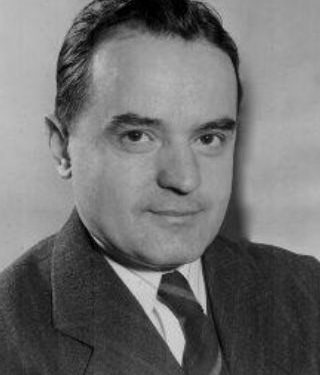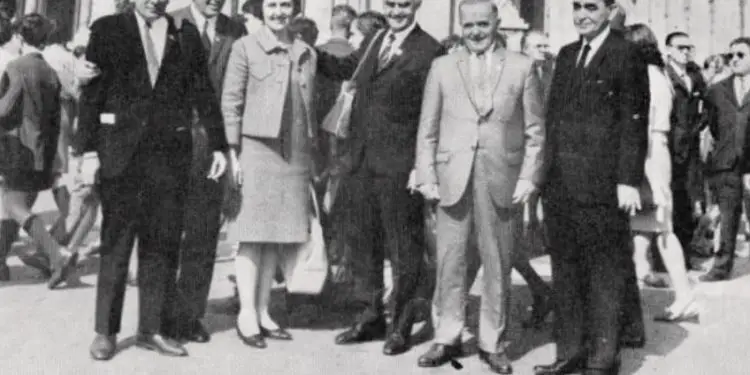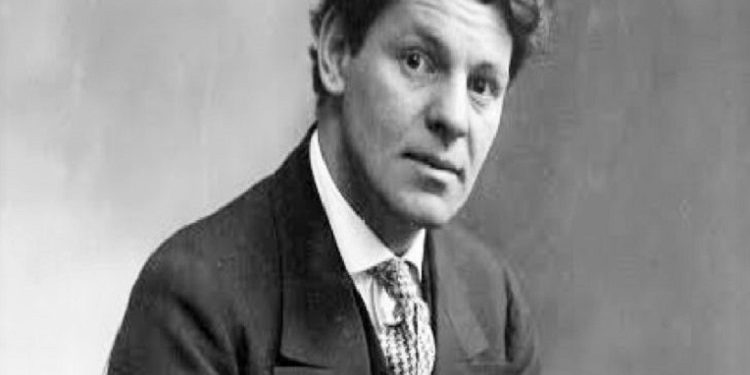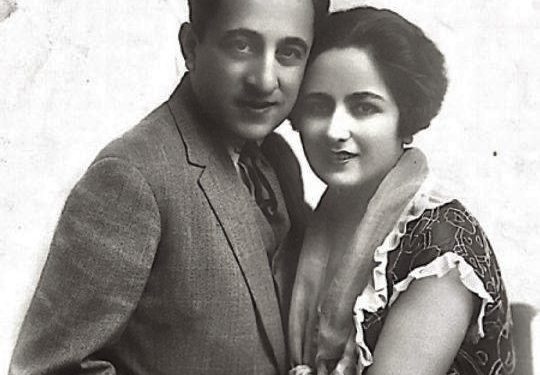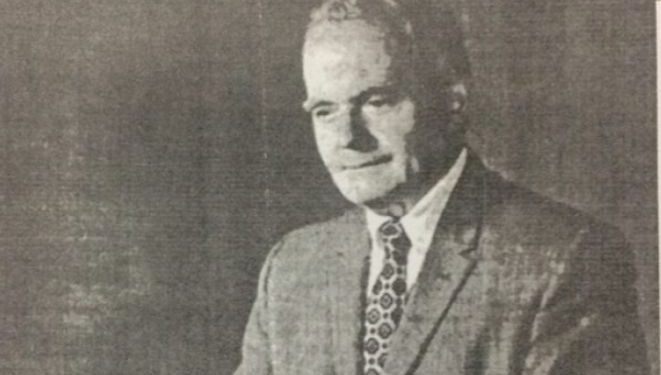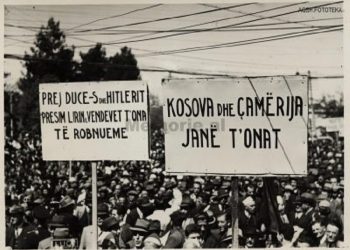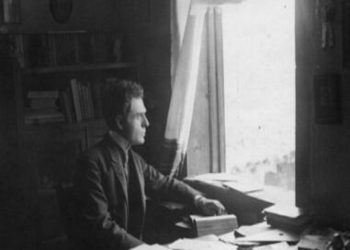From DALIP GRECA
The first part
Memorie.al / Nelo Drizari, the editor of “Dielli” in the years 1937-’39, head of the branch of the “Vatra” Society for New York in 1928, he was the founder of the Albanian Section of “Voice of America”, he was the journalist of the first Albanian in the USA, a graduate of Columbia University and a professor at that University, secretary of the “Progress” Society and president of the “Albanian Students’ Union in America”. Drizari distinguished himself as a journalist, novelist, linguist, researcher and painter. CV to his, we must add one more fact: Drizari, who was the first to introduce the Albanian language into the school programs of Columbia University, where the former student returned as a lecturer of the Albanian language. In 1934, he to publish the first English-Albanian dictionary and in 1947, the Handbook: ‘Spoken and Written Albanian’.
SECRETARY OF “PROGRESS” SOCIETY AND CHAIRMAN OF “ALBANIAN STUDENTS ASSOCIATION”
Nelo Drizari is among the most representative intellectuals of Albanians in America in the last century. His name can be found in the first notebooks (newspapers) of Albanian societies in America, up to The New York Times. In the American Albanian press, Drizari’s name can be found since 1916. In the first issue of the monthly magazine “Pëparimi” edited by Vangjel D. Nasse, which had started publication in New York in 1916, we learn that Zenel H. Drizari , was appointed its secretary. Nelo is derived from his birth name; Zenel.
It seems that he did not hold the position of secretary of the “Progress” Society for long. The reasons for his departure as secretary are not known, but in the issue of September 1916, we do not find Nelo’s name as secretary. Meanwhile, in the September issue, an announcement is published, which conveys the note that; “former secretary of ‘Progress’, Mr. Zenel Drizari, represents ‘Progress’ in Watertbury, Connecticut. We ask the Albanians there, to deliver the reconciliations to him and agree with our representative, on what relationship with ‘Progress’.
Nelo Drizari, during his studies, was very active in social life. He was part of the association created by the Albanian students of America, “Lidhja e Studentev Albanianë”, created on February 22, 1918 and present with his writings and advice, in the magazine “Studenti”, an organ that had a seasonal publication, so a number in each season.
The association, which had its center in the American Int. College, Springfield, Mass, was initiated by Qerim Panaritin, the longest serving editor of “Dielli”. Panariti was the initiator of the founding meeting and chairman of the founding meeting, assisted as secretary by the son of the great patriot, Petro Nini Luarasi, Skenderi. Pareshkevi Qiriazi, present at the founding meeting, former editor of “Morning Star”, was elected honorary president of the students’ association.
In the chronicle from the foundation meeting, the “Studenti” magazine highlights the discussion of Nelo Drizar, who stated that; it was the duty of the students to strengthen this association, which will be very useful for Albanian boys’. Nelo Drizari was elected vice-president of the “Albanian Students’ Association”, with the majority of votes in the first Assembly, while in the second Assembly, that of 1919, he was elected chairman, while Lumo Skëndo (Mithat Frashëri) was the honorary chairman. Instead of Pareshkevi Qiriazi.
Nelo was one of the main contributors with articles. In the first issue of the magazine, which was published four times a year, in the winter edition, Nelo Drizari presents himself with the essay “Become your own master”, where he breaks down the idea that man’s progress in life is in the hands of man himself, although fate plays its part.
In addition, we find a scientific article by Nelos from the field of Astronomy, where on two pages of the magazine, he interprets the construction of the universe, of our planet Earth and the relationship with the planets and other bodies of the universe. The scientific interpretation and the clear and explainable explanation for every reader stand out. Here’s how he explains the construction of the earth: “The Earth is round in the shape of an orange. If you drill a hole through the Earth, you’ll find that the Earth is about 8,000 miles thick.
The earth rotates on its axis about 19 miles a second or, 50 times more than the lead of the manxerr…”! About the moon, it is written that it is 2,200 miles thick and driven by the power of the earth…! The sun is 50,000 miles thick, or 110 times the size of Earth; it is 93 million miles from Earth.” With this understandable language, it also explains the sky, the stars and everything that surrounds us nearby, or in the invisible distance.
It seems that in this first issue, Nelo has carried the main weight of the magazine, as there is also an article, which, although it has a different name, belongs to him in terms of style and language. The article is published in the column; “Satirical piece” and is signed by N (Nelo) Suloi (his real last name – Sula). The article is entitled: “Ambition”. In the lines of this magazine, we find the traces of a book, which so far has not been found, but which Nelo himself warns him.
He had the book ready, and he even sets the number of pages in the book, 150). The book focused on the “rules of meetings together with some names”, which belong to societies with a parliamentary system. The book, – warned Nelo, – is necessary for every Albanian, especially for members of societies and members of the government.
HE WAS A CHILD WHEN HE TOOK THE ROAD “BEHIND THE SUN”
Pat was born in Drizar, Mallakastra, in 1902. When he was only ten years old, he took the path to emigration to a distant country, “behind the sun”, as the first emigrants from Albania expressed themselves. Explanation of the expression; “Behind the Sun,” came not so much from the distance, as from the position of the voyage, when the steamer which bore them, burst forth, and the Sun remained behind. Like any other immigrant, Nelo, who was a navel, still immature, found the beginning very difficult. How could a healthy child make a living with manual labor?!
He tried hard work, which was too heavy for the immature boy, for whom his health was also a problem. The young immigrant went through very difficult moments with his health. He even ended up with paralysis of his limbs, which is also presented in his autobiographical book. This was his most difficult period, where he faced the depression caused by the disease, but in these circumstances, he found his brother by his side, which helped him without sparing himself.
This must have been the period when he returned to Albania, went to Drizar and after a vacation with his family, returned to America. His dream revolved around studying in American schools. Take a hard step; to study at one of the famous universities, that of Columbia. Studied journalism and with an incredible will, coped with the curriculum and managed to graduate.
He is undoubtedly the first Albanian journalist to graduate from an American university. At the time he was studying, Nelua started to sign under his name, the first articles in Albanian and English. His name is encountered more and more often in the pages of the newspaper “Dielli”, which at that time had Editor Akile Tasi and Editor-in-chief Faik Konica. What stand out in Nelo’s articles are the unique style; rich and clean language, as well as a balanced relationship between facts and interpretation.
Nelo is not one of those who weaves a river of words and says nothing; on the contrary, his articles stand out for interweaving facts with analysis. Of interest is an essay published in three issues of “Dielli” with the title; “Three States”. The essay began to be published in “Dielli” on May 15, 1926, continued on May 18 and ended on May 22. In his concept, the basis of the state is the home, where the child is born and raised. For him, the home was and remains the foundation of every state. He titles this first part of the essay; “The house”.
In the next issue, its second part is published, entitled; “School”, where Drizari sees education as a basic tool for the progress and unification of the Nation, under the spirit of the Renaissance. The third part of the essay is titled; “The State”. From the beginning, the author poses the questions: “If a man does not fear hanging and prison, can he answer to the canons of the state? In a word, if the power of government is removed, can a murderer not kill and don’t steal a pirate”? Nelo Drizari was a supporter of a strong state, where the law rules. He was a supporter of King Zog and remained so.
Nelo continues the cooperation with “Dielli” and undertakes to influence the education of Albanians in America, most of who were uneducated. In an article entitled; “Pershesh me mejtime”, published in the issue of June 1926, Nelo evaluates “Dielli” as the most advanced newspaper of the time. The language used in “The Sun” is not messed up like some stinky plain, with words taken from foreign languages.
“The Sun” has been raised with care as measured and delicate as the care of a trained bride, for the baby of the master of the language”. This concept of his for the newspaper makes him dedicated and a regular collaborator. He is a fan of Faik Konica and follows almost all the public and cultural activities of the Minister of Albania in Washington and comments or describes them on the pages of “Dielli”.
VATRAN AND EDITOR OF “DIELLI”
In the “Vatra” Federation, Nelo Drizari joined in June 1921 and continued until October 1940, without breaking contacts until the end of his life. To specify these dates. we were helped by a letter issued by the secretary of “Vatra” in September 1942, an official letter that is kept in the archive of the Federation.
This letter must have been requested by American offices, as is the rule when one is employed in government offices. It is the time when he was entrusted with the creation of the Albanian section of Radio “Voice of America”, a task he received from 1942 to 1948. In that letter, it is specified that Nelo also served as the Editor of the newspaper “Dielli” “, from May 1937 to December 1939.
Drizari has also served as the head of the “Vatra” Federation branch in New York. This is evidenced by the letter he addressed to the editor of the newspaper, The New York Times, and which was published there on September 23, 1928, a letter with the title: “Albania sees the new King Zog, as a usurper and as a patriot”, and the newspaper decides as a subtitle: “Usurper is considered by those who seek unrest, says the Albanian leader, here in America (understand Nelo Drizari), who sees the Monarch as the modern Skanderbeg”.
The letter at the end was signed by Nelo Drizari, with the function of the head of the branch of “Vatra” in New York. There is another testimony that proves that Nelo Drizari was active in “Vatra”, and was even elected as a delegate of the Assembly of “Vatra” in 1922.
This is evidenced by his later protest, published in “Dielli” on March 16, 1978, a few months before he passed away, where he complains about the absence of his name as a delegate, in a photograph of the Assembly from 1922, where that Drizari, was a delegate who represented, in addition to the New York branch, two branches in Ohio and Indiana.
Drizari kept his ties with “Vatra” even though his task was specific. In 1969, we find him in the three-day activities of “Vatra” on the occasion of the 60th anniversary of “Dielli” Newspaper, where he gave a lecture and was on the steering panel of the big event, which brought together the Albanians of America and those of Italy, including Arbëresh.
DRIZAR’S TESTIMONY: KONICA WAS NOT AGAINST THE VLORA WAR
It has often been said that Faik Konica did not find it easy to accept an important national event, in which he himself had not participated. This has been said, not only for the Congress of Manastir, for the Declaration of Independence, but also for the War of Vlora, the Congress of Lushnja, etc. We are bringing the testimony of Drizar, testimony which has a double value; proves that he was active in “Vatër” since he was a student, but also proves that Konica was not against the Vlora War, as is often written.
Nelo publishes in the newspaper “Dielli” on March 16, 1978, a letter in which he expresses his displeasure at not mentioning his name as a delegate in the Assembly of 1922. Here is what he writes, I quote: “In the “Dielli” of January 16 1978, Barney Kirka, mentioned a small number of delegates to the 1922 Weather Assembly. Even at the end, he made this note: The names of others are missing’. I noticed that one of the names that are missing is mine. Of course all the names are listed in the official report and should be in the relevant collection of ‘Dielli’.
At that time, even though I was a student at Columbia University and without any significant experience in the political arena, I decided to represent three branches of ‘Vatra’; the large New York branch, as well as two other branches in the states of Ohio and Indiana. The economic crisis that had left many members without work forced some distant branches to make savings. Fiery discussions extended that historic Assembly longer than ever before.
One of the main events happened like this: A handful of delegates, badly inspired by repetitions under the rug, as well as lame information, had surprisingly turned against Faik Konica. Their objections were mainly based on an interview that Faik Konica had given when he was in Europe. The editor of the Italian magazine, without any reason or other, had given it to be understood, as if the Albanian leader had praised the ruling Italian army during the liberation of Vlora.
And when Hasan Bitincka, some others, and I, proposed that Faik Konitza be elected the chairman of “Vatra”, the Assembly hall buzzed with heated objections, as well as with hearty cheers. It was understood that here, the seeds of division were being planted, while Albania was in danger, from the litmus nations of the Balkans.
After we immediately explained that the editor of the magazine had distorted the words of Faik Konitza, the opposing talks turned into mild unification talks. Faik Konitza was elected chairman of “Vatra” and editor-in-chief of “Diellit”. Andon Frashëri, with his consent, was elected editor and Aqile Tasi, assistant editor. Even a few months later, when “Vatra” and “Dielli” had taken the good path under his leadership, some of us gathered around the bread table in Boston.
That evening, with joy that “Vatra” had strengthened so much that its voice was heard everywhere in the world, for the good of Albania, the dinner ended with great satisfaction. Also, in the above events, the chairman of “Vatra” again praised the liberators of Vlora, mentioning with a literary beauty, some Kreshnik songs that reflected the inherited bravery of the Albanian people.
One of the legendary songs, mentioned by the former and the song of Mallakastra (11 historical villages, above the river Vjo), which starts like this:
“Oh my God, Rrapo Hekali
When you call how the mountain shakes,
The mountain shakes, the field shakes,
You put it in my throat…»!
Nelo comments: The Mallkastriots, led by Rrapo Hekal, had declared war on a Pasha, who had savagely seized their very valuable goods. Also, with the liberation of Vlora, the Laberi and Malkastrians, with their weapons in their hands and with their guns, rushed with heroic bravery over the tented and electrified fences of the occupying army and put their heads in the enemy’s throats”!
WHEN HE INTERVIEWED ALEXANDER MOISIU
Nelo Drizari was lucky enough to meet and interview the great actor of Albanian origin, Aleksandër Moisiu, during the tour that his theater troupe made in the USA. We are stopping at length on the descriptions of Drizar, as according to the writing, the adoration he had for the great actor is revealed. Nelo conveys the warm welcome that the Americans gave to the actor of Albanian origin with a feeling of excitement:
“When Alexander Moses first came to America, November 1927, the world said he only came for four weeks. But his authorial games, I got a big fuss. People wanted time and opportunity to see this famous actor. Reinhardt’s program was to play one drama a week, so as to leave room for others. The people’s request forced him to extend the time and keep the protagonist until the 8th of this month (February 1928)”.
Conveying the atmosphere that surrounded the famous actor during the performances, Nelo writes for the readers of “The Sun”: Moisiu is truly a beloved man. Three times that I have met him backstage behind the toys, I have been surprised by the behavior of his admirers. Many people, most of them women, rushed like maddened mobs to shake Moses’ hand. Others play the role of hunters, for gifts (Souvenr hunters). The latter required his signature, on programs, faces or books related to Moses.
The great actor waited for them with a smile and distinguished chivalry and filled their desire, when he was not in a hurry to go anywhere. These pleasant manners, this distinguished knighthood, together with his talent, has won him close friends and many admirers. Although some say that Moses is stern, his nature seemed to me to be mild. Moses seems to be of the Nordic race: of the Anglo-Saxon, or Teutonic, race. Those who do not know that even in Albania, there are many people of this type, do not believe that his father was Albanian and his mother was Italian.
This is true. Moisiu was born in Trieste in 1890. His father was Kostandin Moisiu, from Durrës, who had a business in Vienna and later in Fiume in Hungary. Aleksandër Moisiu spent his childhood in Albania. He went to school in Durrës and before leaving for Vienna, he knew Albanian well. Since his father sent him to Vienna, to school, he had no chance to use the language of Homeland, the Albanian language. So that today he remembers only a few rare words. Memorie.al
The next issue follows




